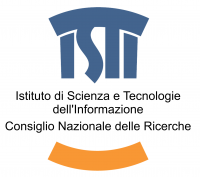Simone Bonzano, Alessandro Di Ludovico
The use of quantitative methods in nowadays archaeology of the Near East must unavoidably face the difficulties of reaching the primary sources of data, which is the geographical areas where data are to be collected. Moreover, the heterogeneity of the publication methods of archaeological data in reports that are often quite old can bring complications to researches dealing with classes of artefacts as well as settlements and settlements patterns. These problems especially affect the relics of many cultures pertaining to the field of pre-classic Near East, the perceptive and expressive habits of which are still largely unknown. This inconvenient situation has led some scholars to try to optimize data contained in previous publications, to look for new sources of data or to use advanced technologies (Remote Sensing, Spatial Analysis) to understand the historical landscape.
In this session the discussion is focussed on the use of IT – and quantitative methods in general – in conflict areas and obscure material culture phenomena of nowadays Near Eastern Archaeology.
The session is open to studies dealing with all periods of archaeological interest that fall within the geographical realms of the Near East (from Prehistory to the Islamic Age), as well as to theoretical and methodological contributions about data collecting and the investigation of unknown or poorly known figurative or verbal languages.
In sum, this workshop is oriented to the discussion of:
- theory and methodology of archaeological, art historical and philological research on cultures that pertain to Near East Archaeology and pertain to regions that currently undergo conflicts or are endangered;
- use of quantitative methods in Landscape archaeology of the Ancient Near East (from Prehistory to the Islamic age) with particular reference to Spatial Analysis, Remote Sensing, ABM and qualitative interpretation of quantitative data;
- use of quantitative methods in the study of material and figurative cultures of the Ancient Near East (from Prehistory to the Islamic age);
- use of quantitative methods in philology and epigraphy of poorly known or problematic languages and writing systems.


